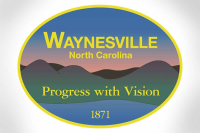Archeologist to visit proposed quarry site
By Sarah Kucharski • Staff Writer
Tuckasegee residents are hoping that the proximity of an ancient Cherokee village to the site of a proposed rock quarry will help coax state officials not to issue a permit to the quarry’s operators.
Linda Hall, an assistant state archeologist based in Asheville, has been reviewing historical records of the site and is planning to visit the quarry property to determine how far the village boundaries extended.
The quarry property is about 57 acres and is owned by Carolina Crushed Boulder and Stone LLC. A county ordinance regulating high-impact industries will likely doom the project. However, the state could still issue a permit, something opponents are trying to stop.
The company’s application to the state Department of Environmental and Natural Resources indicates the company plans to mine only about 4 acres of the site.
“We’re mostly going to be concerned with the area where they’re going to be disturbing ground,” Hall said.
Related Items
The parts of the village site that have been most heavily researched are further away from the proposed quarry site, and Hall estimated that mining operations would not have a detrimental effect there.
“In terms of where we do know the site is, it’s unlikely that dust or anything like that would have an effect on the site,” she said.
The most well-known part of the village site has been dated to between the 1400s and the late 1700s, or the Qualla Period of Cherokee history. Researchers from the University of North Carolina at Chapel Hill first excavated the site in the 50s and 60s, finding the post holes of one round structure that may have been used for ceremonial purposes and features associated with it.
However, the village’s significance lies not so much in the particular artifacts found there but in its ability to help archeologists piece together the Cherokee’s history in the area, as the patterns found on broken pottery pieces indicate that the village was indeed Cherokee, not some other tribe.
“There are literally hundreds of Native American village sites in these river valleys,” said the Eastern Band of Cherokee’s Tribal Archeologist, Russ Townsend. “Basically, if you find a flat spot, you’re likely to find a site.”
Villages often shifted locations within a site over the years, as every 5 years or so individual families most likely tore down and rebuilt their homes. The process was related to the home’s primitive materials — thatch roofs that would rot, wood that would become infested with bugs — and the practice of using trash pits, sort of like miniature landfills, would eventually become filled with the remains from killing and cleaning wild game or other household waste.
“So you just say, ‘let’s start from scratch,’” Townsend said.
Of particular concern for the Tribe is the potential for graves to be located on the village site.
“Cherokees buried right next to their houses in those days,” Townsend said. “We don’t want to see graves dug up.”
Despite the site’s reputation as being fairly well known among the archeological community, it has never been completely mapped out, said Cherie Moses, whose family owns land within the known village boundaries.
Moses is a driving force in trying to have the site placed on the State and National Historic Registry. The site has been placed on the state’s list for study. The state will make recommendations about what should be done in regards to the site, which will be passed on to the federal level where they make the determination for the National Registry.
Such a designation, while an honor, does not necessarily protect a historic resource, Moses said. However, state legislation does enable local governments to create a historic preservation commission and author a historic preservation ordinance that could spell out what protections, if any, are granted to local historical resources. Jackson County has a historical preservation society, but the group has no official power.
A historical preservation commission and ordinance would have a lot to offer Jackson County. So much of Western North Carolina is home to a wealth of cultural history including native Cherokee, Scots-Irish settlers and early Appalachians.
“It would be wonderful if that would happen,” Townsend said. “Jackson County sure has a lot of history to talk about. It would be good if they had some kind of countywide effort to direct those efforts.”
Meanwhile, the Eastern Band is keeping a close eye on the Tuckasegee site and proposed quarry. So far the Band, has not taken any official stance on the issue.
“My office, we have to walk a fine line,” Townsend said. “If we’re out grandstanding all the time, we will damage our credibility.”
The Eastern Band does not have any official say in whether or not the state Department of Environmental Resources should issue an operating permit to Carolina Crushed Boulder and Stone, at least not yet.
“Until it becomes a federal case, we don’t really have a part in the discussion,” Townsend said.
For example, if Carolina Crushed Boulder and Stone sought out a permit under the Clean Water Act — which it most likely will — then the Eastern Band could get involved. Even then, such a decision would be left to the Chief and Tribal Council.
“Occasionally something will ring a bell and they’ll get involved,” Townsend said. “Often it takes something politically explosive or when human graves are known to be impacted. I think once we said, ‘yes, there are graves in the area because we found pottery,’ I think Council would get much more excited.”
The Eastern Band’s political influence, which has grown decidedly over the past few years, may be the best hope for Tuckasegee residents looking to protect the village site and protect their own homes from the proposed quarry. State archeologists are permitted on an individual’s property only if the property owner allows it, Hall said. And if anything is found, that doesn’t mean the Department of Environmental and Natural Resources won’t issue a quarry permit.
“Legally we don’t have much of a hold on these folks honestly,” Hall said. “The way our procedures have been established is if they’re going to do a mine, they will allow us to go look at the property. That’s as far as it goes.”









